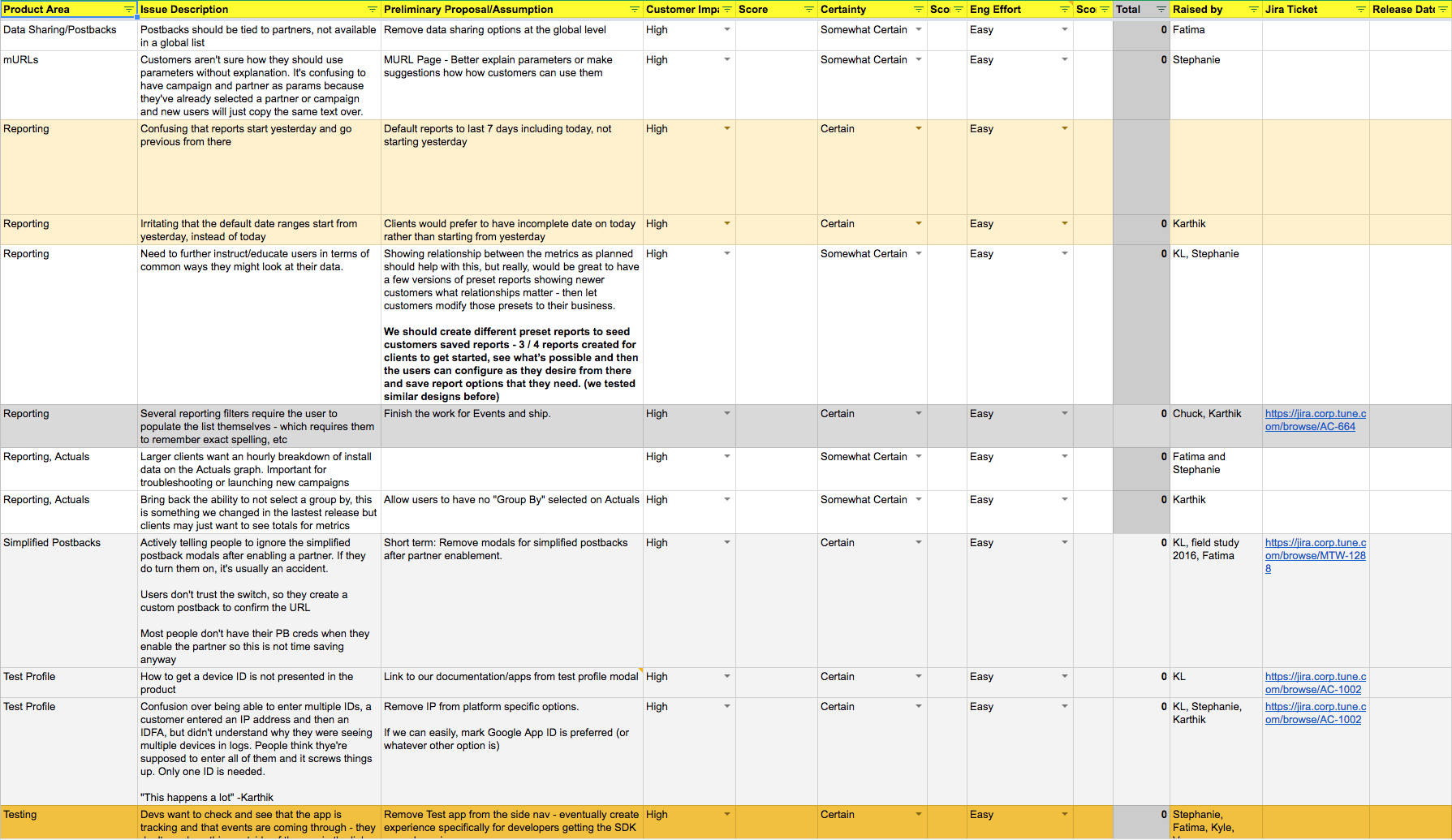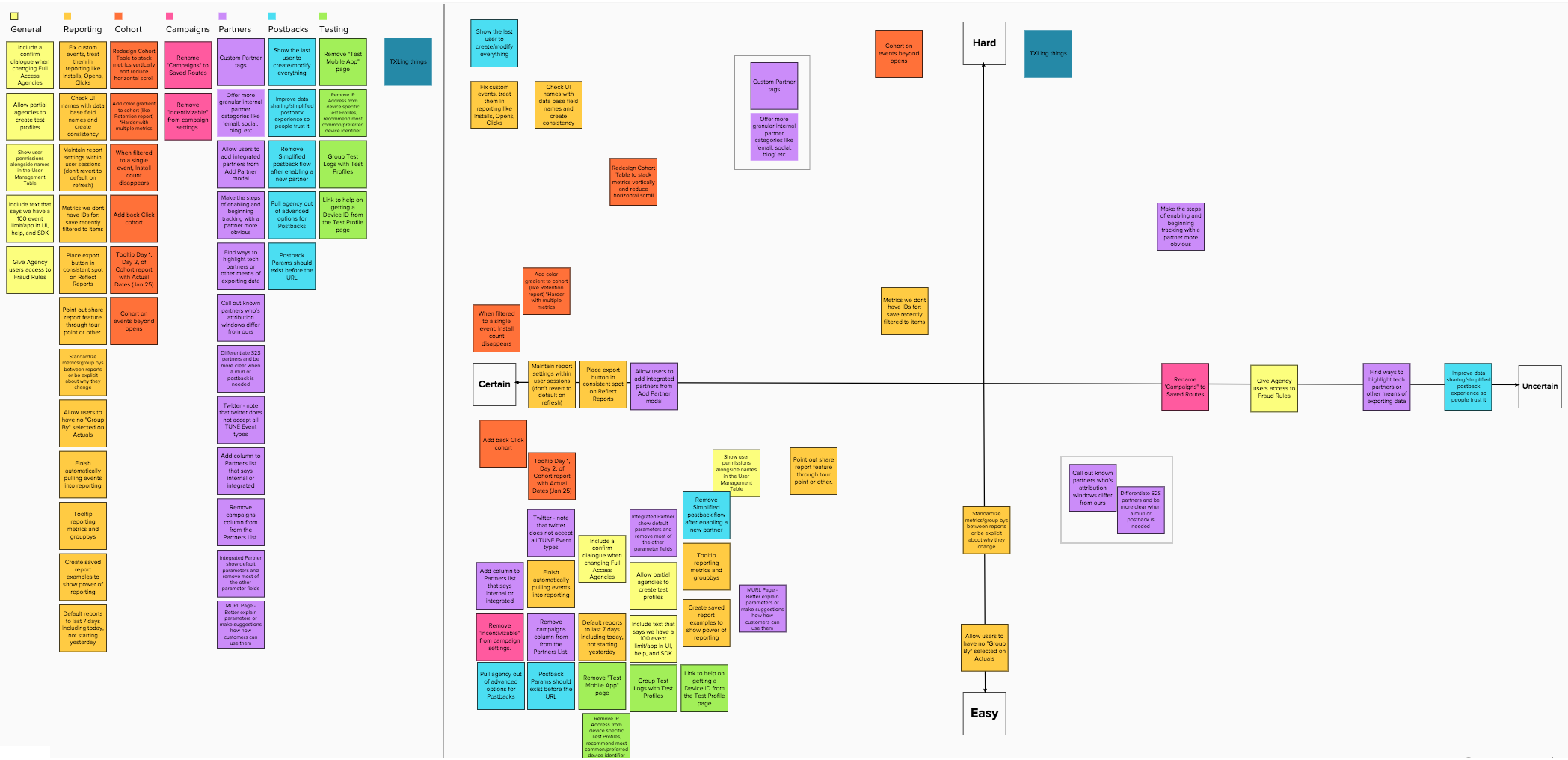
Experience Improvements
At the beginning of 2018, improving customer joy and satisfaction with our products took over the company focus.
TUNE, 2018
BUSINESS GOAL
For a long time, Tune focused heavily on releasing features, leaving very little time to adjust and improve the existing product. In Q4 of 2017, our product team launched an NPS survey. One of the results of that survey was extreme focus on the ease of use and customer joy of our product, as it presently existed.
We needed to address the problems and pain customers felt on a daily basis before we could ask them to adopt any further features.
PROBLEM
This new initiative was an opportunity for the UX team to organize, prioritize, and drive change. As a company, we have tons of customer feedback from customer facing teams, and the UX team had a wealth of information from past interviews, field studies, and usability studies. However, the information was unorganized and overwhelming. There was not much indication of how any given update would influence customer happiness.
We had one quarter to research, design, and ship changes that would increase customer satisfaction.
GETTING ORGANIZED
The first step was to update and organize the research we had. Since Q2 was already in progress, we turned to our Customer Support and Account Management teams to gather insights on the biggest struggles for customers.
I planned and executed 8 interviews with the members of those teams. I followed the format we typically use for customer field studies, and asked the interviewees to give me a candid summary of typical issues they hear about different areas of our products. I then sifted through the notes looking for themes and organized that feedback in one place where we could compare frequency and assumed customer impact (we used GA and Heap data to loosely assign impact based on page/feature usage).

The spreadsheet where issues were aggregated and tagged by theme.
Now that we had a list of issues that was organized and accessible, we needed to get a sense of what we could solve quickly and get into the hands of engineers.
Some of the issues had pretty obvious solutions, but others did not. We wanted to priorize issues we could solve quickly and had a reasonable solution for first so we could start moving the needle. This approach also opened up time to determine solutions for larger problems.
For each issue in the spreadsheet, I came up with a proposal based on the issue and what I already knew about customers. I then called two meetings with other members of the UX team, product, and engineering leads to help me determine the technical difficulty of each solution and how confident were were that they would solve the underlying issue. We had a healthy discussion in the meeting and used Mural to group the solutions.
We started making tickets for the bottom left corner proposals - proposals that were relatively cheap technically and we were confident would address the issue.

Proposals were color coded by product area and placed in a quadrant according to their simplicity and certainty
RESULTS
We spun up a slew of projects from this research and organization and the UX team has been busy designing against the outstanding issues.
Highlights include:
- Updating our test profile modal to reduce mistakes and unnecessary information.
- Improvements to the interaction and filtering of our reporting.
- Changing our Add Partner flow to decrease duplication of partners and encourage clients to add Integrated Partners.
Each of the improvements has been tracked to confirm that they solved the underlying issue. Using SQL, we saw the test profile change take the number of incorrectly added test profiles from 25% to 0.
We haven't run another NPS survey yet, but we hearing a positive response from customers through our customer facing teams.



To learn more about recent work, get in touch